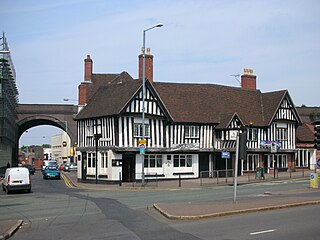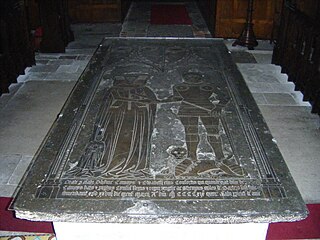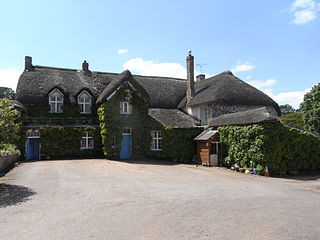Related Research Articles

Ludgershall is a village and civil parish in the unitary authority area of Buckinghamshire, England. It is near the boundary with Oxfordshire, about 5.5 miles (9 km) south-east of Bicester and 5 miles (8 km) west of Waddesdon.
Marmaduke Lumley was an English priest, Bishop of Carlisle from 1429 to 1450, and Knight Commander of the Order of St. John of Jerusalem. He was a son of Ralph de Lumley, 1st Baron Lumley and Eleanor de Neville. He was elected about 5 December 1429, and consecrated on 16 April 1430. He was Bishop of Lincoln for a short time before his death in December 1450. He was educated at University of Cambridge and was appointed Precentor of Lincoln Cathedral in 1425. He also became Chancellor of the University of Cambridge in 1427 and was Master of Trinity Hall, Cambridge from 1429 to 1443. From 1446 to 1449 he served as Lord High Treasurer of England. Lumley's tenure as Lord High Treasurer occurred during the Great Bullion Famine and the Great Slump in England.

Thomas of Lancaster, Duke of Clarence was a medieval English prince and soldier, the second son of Henry IV of England, brother of Henry V, and heir to the throne in the event of his brother's death. He acted as councillor and aide to both.

Mavis Enderby is a hamlet and civil parish in the East Lindsey district of Lincolnshire, England. It lies in the Lincolnshire Wolds, 4.5 miles (7 km) east from Horncastle.

Arlesey is a town and civil parish in Bedfordshire. It is near the border with Hertfordshire, about three miles north-west of Letchworth Garden City, four miles north of Hitchin and six miles south of Biggleswade. Arlesey railway station provides services to London, Stevenage and Peterborough. The Domesday Book mentions Arlesey. The town's name means the 'island of a man/woman named Aelfric'.

Milton Ernest is a village and civil parish in Bedfordshire, England, about 5 miles (8.0 km) north of Bedford itself. It had a population of 754 in 2001. This had risen to 761 according to the 2011 census. The village is situated on the east bank of the River Great Ouse, and is the site of Milton Ernest Hall, which was used as the United States Eighth Air Force's support command headquarters in the Second World War.
Statute merchant and statute staple are two old forms of security, long obsolete in English practice, though references to them still occur in some modern statutes.

Deritend is a historic area of Birmingham, England, built around a crossing point of the River Rea. It is first mentioned in 1276. Today Deritend is usually considered to be part of Digbeth.

Aubrey de Vere, 10th Earl of Oxford was the third son of John de Vere, 7th Earl of Oxford and Maud de Badlesmere, daughter of Bartholomew de Badlesmere, 1st Lord Badlesmere.
Casu consimili was a writ of entry, where a tenant by courtesy, or for life, transfers property to another in fee or in tail, or for another's life.

Thomas de Camoys, 1st Baron Camoys, KG, of Trotton in Sussex, was an English peer who commanded the left wing of the English army at the Battle of Agincourt in 1415.

Houghton Conquest is a village and civil parish located in the Central Bedfordshire district of Bedfordshire, England. The parish also includes the hamlet of How End.

Duloe is a hamlet in the English county of Bedfordshire.
Ralph Ergham was the English bishop of Salisbury from 1375 to 1388, and then bishop of Bath and Wells from 1388 to 1400.

Small Hythe is a hamlet near Tenterden in Kent, England. The population is included in Tenterden.

St John's Jerusalem or Sutton-at-Hone Preceptory is a National Trust property at Sutton-at-Hone, Kent, England which includes the 13th century chapel of the Knights Hospitaller and a garden moated by the River Darent. It is open to the public on Wednesday afternoons from April to October.

Oughterby is a hamlet in the Allerdale district, in the English county of Cumbria. It is near the city of Carlisle and the village of Kirkbampton. For transport there is the B5307 road nearby.
Saint Guthlac's Priory was a Benedictine priory in Hereford, England. It was originally founded in the early 12th century near the Church of St. Guthlac in town. After the church was ruined circa 1143, during the Anarchy, it relocated to a site between the present day Bath Street and Commercial Road at grid reference SO51534019.
Thomas Rodborne DD was an English medieval churchman and university Chancellor.

Spencer Combe in the parish of Crediton, Devon, is an historic estate. The grade II listed farmhouse known today as "Spence Combe", the remnant of a former mansion house, is situated 3 miles north-west of the town of Crediton.
References
- ↑ National Archives; CP 40/677; http://aalt.law.uh.edu/AALT1/H6/CP40no677/bCP40no677dorses/IMG_0991.htm; first entry, (in Latin)
- Webster's Revised Unabridged Dictionary, 1913.
 This article incorporates text from a publication now in the public domain : Chambers, Ephraim, ed. (1728). Cyclopædia, or an Universal Dictionary of Arts and Sciences (1st ed.). James and John Knapton, et al.
This article incorporates text from a publication now in the public domain : Chambers, Ephraim, ed. (1728). Cyclopædia, or an Universal Dictionary of Arts and Sciences (1st ed.). James and John Knapton, et al.{{cite encyclopedia}}: Missing or empty|title=(help)